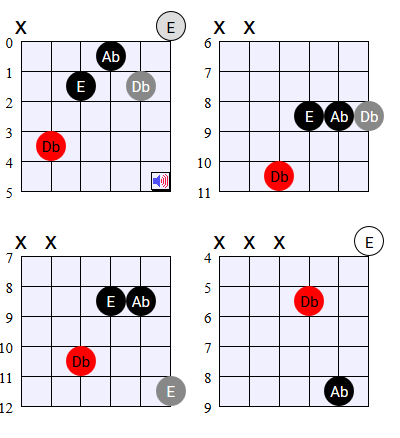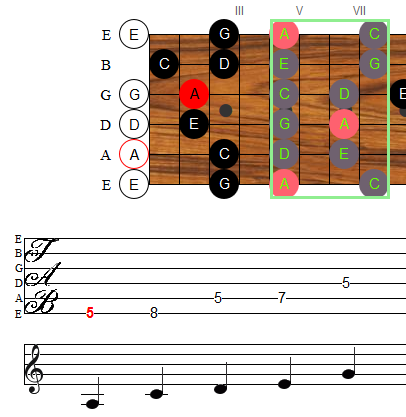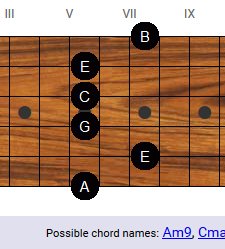An add chord is any chord with extra notes added. The additional notes can be written as numbers or letters. They are written like CaddF# or Gadd9.
Continue reading Add ChordsThe Guitarator Suite of Apps
The ultimate guitar reference tools for all platforms
 Guitarator Toolbox
Guitarator Toolbox
for Windows

- Includes Chorderator, Scalerator, and Reverse Chorderator
- Lefty mode
- Listen to chords and scales
- Share chord shapes
 Guitarator Toolbox 2.0
Guitarator Toolbox 2.0
for Mac OS X

- Includes Chorderator, Scalerator, and Reverse Chorderator, PLUS Metronome and Tuner
- Lefty mode
- Listen to chords and scales
- Share chord shapes
 Chorderator
Chorderator
for Android

- Look up chords for any tuning
- Listen to chords
- Share chord shapes
- Find related chords and scales
 Reverse Chorderator
Reverse Chorderator
for Android

- You design the chord, the app tells you what it’s called.
- Listen to the chord you designed.
- Integrates with Chorderator for Android
 Chorderator
Chorderator
for iPhone and iPad

- Look up chords for any tuning
- Listen to chords
- Share chord shapes
- Find related chords and scales
 Reverse Chorderator
Reverse Chorderator
for iPhone and iPad

- You design the chord, the app tells you what it's called.
- Listen to the chord you designed.
- Integrates with Chorderator for iPhone and iPad (iOS)
FREE Online Tools
Chorderator
Look up chords

Scalerator
Look up scales

Chord Designer
Reverse chord lookup

Chord Inversions
Last lesson, I covered interval inversions. You can re-read that now, if you want, though it's not a big deal if you don't. To summarize, inverting an interval just means measuring the distance between two notes starting on the second note instead of the first note, for example, instead of counting the distance from C to G (perfect fifth), you can start at G and count up to the C an octave above, giving you a perfect fourth.
A chord inversion is similar. It just means starting the chord on a note other than the tonic note.
Continue reading Chord InversionsInterval Inversions
Quick, what’s the interval between A and C?
Ok, it’s a trick question. The answer is it depends on which octaves the notes are in, and specifically which note is higher. That’s the concept of interval inversions that I will talk about here. I suggest reviewing my lessons on The Musical Alphabet and Intervals.
Continue reading Interval Inversions9th, 11th, and 13th Chords
Oooh, look at all those high numbers. Those must be really complicated, difficult chords! Probably sound craaaazy!
Ok, so maybe not.
These chord names may sound impressive, but they’re really just continuations of the same patterns we’ve already been using. A ninth chord is just a seventh chord with the added interval of the major ninth. An eleventh chord is just a ninth chord with the added interval of the perfect eleventh, and a thirteenth chord has the added interval of the major thirteenth.
Continue reading 9th, 11th, and 13th ChordsSuspended Chords
I covered major and minor chords in a previous lesson. A suspended chord is what you get when you take a major or minor chord and replace the interval of the third with another interval.
To review, here are the interval formulas for major and minor chords.
| Major | Minor |
| root, major third, perfect fifth | root, minor third, perfect fifth |
(You can refer back to my intervals lesson if you don’t remember what the interval names mean.)
You’ll notice that the two chord formulas only differ in the second note added, which is an interval of either a major third or a minor third. So if you take that out there is nothing to distinguish a major chord from a minor chord. In fact Continue reading Suspended Chords